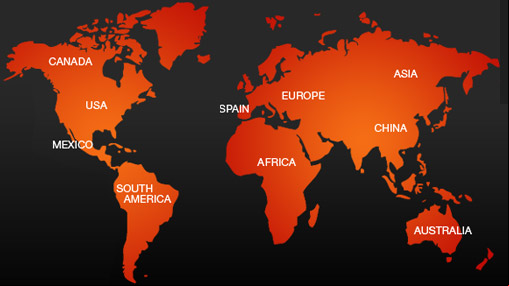- Home About RM Minerals
- Virtual Photo Museum Blog RM
- Microscopy and instruments How to Buy Disclaimer
Copyright 2010-2025
rosellminerals.informativomineiro.com



A very aesthetic specimen formed by several fluorite cubes with echelened and polysynthetic growths. Nice color and luminous. A different specimen from Berbes. 1h3e45
Most people do not know that these come from anywhere but Utah, but here is a Kalahari Manganese fields bixbyite specimen. A druse of highly lustrous, very sharp interpenetrated cubes of black bixbyite from this famous locality. An excellent specimen for the locality. A true rarity.
Very good specimen of bultfonteinite forming white acicular crystals, with prisms slightly beige to orange of olmiite. Two rare species from a mining area well known for systematic collectors. Accompanied by tabular celestine crystals. Good size and better quality.
Group of fluorite crystals, transparent, bright, with very sharp faces and edges and showing forms of the cube. One of the crystals has a very interesting asymmetrical face. Grayish-blue color, depending on the incident light. On an matrix covered by hyaline quartz crystals.
A rich group of well-defined cubic crystals of fluorite showing polysynthetic growth on faces. Violet-purple color is very intense. Many of them are interpenetrating, giving the whole a unique aesthetics. From a classic Asturian locality.
Exceptional group of cubic fluorite crystals with sharp faces and edges, matt brilliance and good size. It highlighted by the deep violet color, with marked geometric color zoning. An old piece from a classic locality for Spanish fluorite .
This specimen is formed by a group of fluorite crystals, interpenetrating, showing echeloned growths on their faces. Very brilliant and with violet color zoning, more intense in the crystal core. They are disposed on a small matrix with quartz crystals.
This excellent specimen of galena comes from a classic ancient German lead-zinc mine. It shows a group of cubic crystals, interpenetrated. Good metallic color and luster, perfectly disposed on a matrix of dolomite crystals peppered by tiny chalcopyrite. It is a perfect miniature collected in the 60s, a German classic.
This excellent specimen of galena comes from a classic ancient German lead-zinc mine. It shows a group of cubic crystals, interpenetrated, truncated by the octahedron and also by the trapezohedron. Good metallic color and luster, perfectly disposed on a matrix of dolomite crystals peppered by tiny chalcopyrite. It is a perfect miniature collected in the 60s, a German classic.
Celestine specimens from Azaila are recognized in the mineralogical world for its beauty, intense color and richness of facets. In the area of Azaila-Lécera we can find good size nodules and nodular levels of silexites. Most of these nodules are compact, but at certain levels appear cavities with gypsum and quartz crystals (sometimes amethyst). In very few of these cavities we can find celestine crystals. Large crystals are usually imperfect. Today it is very difficult to get good specimens from this Aragonese locality.
In this specimen we can see a cavity within the flint matrix in which has developed a faceted celestine crystal. Honey to yellowish tone, very sharp, brilliant and with an exceptional transparency.
Probably one of the best celestine specimens I've seen in this locality. Very aerial, with really good size and showing well defined faces and edges. Honey color, intense with certain zoning and an excellent transparence. Facetted by the pinacoid and various rhombic prisms. The cavity is completely covered by small quartz crystals, brilliant, between hyaline to amethyst. A definitive first quality specimen from Azaila, nearly impossible to find.
Celestine specimens from Azaila are recognized in the mineralogical world for its beauty, intense color and richness of facets. In the area of Azaila-Lécera we can find good size nodules and nodular levels of silexites. Most of these nodules are compact, but at certain levels appear cavities with gypsum and quartz crystals (sometimes amethyst). In very few of these cavities we can find celestine crystals. Large crystals are usually imperfect. Today it is very difficult to get good specimens from this Aragonese locality.
Celestine specimens from Azaila are recognized in the mineralogical world for its beauty, intense color and richness of facets. In the area of Azaila-Lécera we can find good size nodules and nodular levels of silexites. Most of these nodules are compact, but at certain levels appear cavities with gypsum and quartz crystals (sometimes amethyst). In very few of these cavities we can find celestine crystals. Large crystals are usually imperfect. Today it is very difficult to get good specimens from this Aragonese locality.
In this specimen we can observe a big cavity. It contains a group of well formed celestine crystals with color zoning between honey to colorless and nice transparence. Very rich in faces, they show pinacoidal faces close to rhombic prisms. The cavity is completely covered by small quartz crystals, brilliant, between hyaline to amethyst. A great specimen.
Celestine specimens from Azaila are recognized in the mineralogical world for its beauty, intense color and richness of facets. In the area of Azaila-Lécera we can find good size nodules and nodular levels of silexites. Most of these nodules are compact, but at certain levels appear cavities with gypsum and quartz crystals (sometimes amethyst). In very few of these cavities we can find celestine crystals. Large crystals are usually imperfect. Today it is very difficult to get good specimens from this Aragonese locality.
In this specimen we can observe a line of cavities. The main vug contains a rich group of well formed celestine crystals, one of them with a very good size, with a very marked honey tone and nice transparence. Very rich in faces, it shows pinacoidal faces close to rhombic prisms. The cavity is completely covered by small quartz crystals, brilliant, between hyaline to amethyst. A great specimen more than representative.
Groups of pyromorphite crystals (analyzed) which are disposed on a matrix of goethite. The green yellowish color is very intense, exceptional brilliance, translucent to transparent. They show defined hexagonal prisms truncated by the pinacoid. Under magnifying glass transparency we can be seen perfectly. A nice miniature.
They come from a Moroccan locality that once was known by the presence of pyromorphite, but not with this quality and less represented in collections. Few specimens have been presented at Sainte-Marie-aux-Mines 2015.
Groups of pyromorphite crystals (analyzed) which are disposed on a matrix of goethite. The green yellowish color is very intense, exceptional brilliance, translucent to transparent. They show defined hexagonal prisms truncated by the pinacoid. Under magnifying glass transparency we can be seen perfectly.
They come from a Moroccan locality that once was known by the presence of pyromorphite, but not with this quality and less represented in collections. Few specimens have been presented at Sainte-Marie-aux-Mines 2015.
Groups of pyromorphite crystals (analyzed) which are disposed on a matrix of goethite. The green yellowish color is very intense, exceptional brilliance, translucent to transparent. They show defined hexagonal prisms truncated by the pinacoid. Under magnifying glass transparency we can be seen perfectly.
They come from a Moroccan locality that once was known by the presence of pyromorphite, but not with this quality and less represented in collections. Few specimens have been presented at Sainte-Marie-aux-Mines 2015.
Groups of pyromorphite crystals (analyzed) which are disposed on a matrix of goethite. The green yellowish color is very intense, exceptional brilliance, translucent to transparent. They show defined hexagonal prisms truncated by the pinacoid. Under magnifying glass transparency we can be seen perfectly.
They come from a Moroccan locality that once was known by the presence of pyromorphite, but not with this quality and less represented in collections. Few specimens have been presented at Sainte-Marie-aux-Mines 2015.
Groups of pyromorphite crystals (analyzed) which are disposed on a matrix of goethite. The green yellowish color is very intense, exceptional brilliance, translucent to transparent. They show defined hexagonal prisms truncated by the pinacoid. Under magnifying glass transparency we can be seen perfectly. They come from a Moroccan locality that once was known by the presence of pyromorphite, but not with this quality and less represented in collections. Few specimens were presented at Sainte-Marie-aux-Mines 2015.
Groups of pyromorphite crystals (analyzed), some individualized, which are disposed, with a very aesthetic contrast on a matrix of goethite. The yellowish green color is very intense, exceptional brilliance, translucent to transparent. They show defined hexagonal prisms truncated by the pinacoid, some of them insinuate the hexagonal dipyramid faces. Under magnifying glass transparency we can be seen perfectly.
They come from a Moroccan locality that once was known by the presence of pyromorphite, but not with this quality and less represented in collections. Few specimens have been presented at Sainte-Marie-aux-Mines 2015.
Groups of pyromorphite crystals (analyzed), some individualized, which are disposed, with a very aesthetic contrast, on a matrix of goethite. The yellowish green color is very intense, exceptional brilliance, translucent to transparent. They show defined hexagonal prisms truncated by the pinacoid, some of them insinuate the hexagonal dipyramid faces. Under magnifying glass transparency we can be seen perfectly.
They come from a Moroccan locality that once was known by the presence of pyromorphite, but not with this quality and less represented in collections. Few specimens have been presented at Sainte-Marie-aux-Mines 2015.
Very aesthetic specimen formed by several groups of fluorapophyllite-(K) rosettes, very brilliant, defined, colorless (with a slight greenish tone) which are disposed very aerial on a matrix with Stilbite-(Ca) and fine white needles of okenite. A novelty at Sainte-Marie-aux-Mines 2015.
In this specimen we can observe a group of quartz crystals with well defined faces and edges. We see a well-developed prism with rhombohedral terminal and trapezohedron faces. Transparence and brilliance are both excellent and with a very uniform smoky tone. It is not easy to find specimens from this Alpine quartz locality.
Note: Le Règne Minèral. Minèralogie du Massif du Mont-Blanc. Hors Sèrìe V, 1999.
A very aesthetic group of very sharp quartz crystals with a uniform smoky tone, more intense in terminal rhombohedron, well developed prism followin main axis. From a classic Mont-blanc area for this species.
In this floater specimen we can observe a rich group of quartz crystals, one of them dominant, with well defined faces and edges. We see a well-developed prism with rhombohedral terminal and trapezohedron faces. Transparence and brilliance are both excellent and with a very uniform smoky tone. It is not easy to find specimens from this Alpine quartz locality.
Note: Le Règne Minèral. Minèralogie du Massif du Mont-Blanc. Hors Sèrìe V, 1999.
Group of interpenetrated crystals of hexagonal shape, with a dark gray metallic color and brilliant luster. Crystals of this specimen remind wurtzite for its hexagonal shape and dipyramids observed. Many similar samples from this mine has been classified as wurtzite. For this reason we heve proceeded to analyze them. The results indicate that this is a really amazing and interesting pseudomorphosis of sphalerite after wurtzite. Accompanied by nice brilliant franckeite globular crystal aggregates and small hexagonal prism of plumbogummite (also a pseudomorph). A great opportunity for psedomorph and Bolivian mineral collectors.
Studies were carried on by X-ray diffraction of the matrix and hexagonal crystals. They have shown that it is sphalerite. Also, the Raman spectra shows that in the innermost areas of the crystals wurtzite presence has been detected, the rest is sphalerite. SEM-EDS yield a composition: (Zn1.05,Fe0.09)Σ=1.14S1.00.
Specimens of well developed wurtzite are unusual. This hexagonal zinc sulphide, with some iron, presents dimorphism with sphalerite. It is known that wurtzite is stable at high temperatures, low temperatures being the most stable phase sphalerite. This Bolivian mine is the type locality for the wurtzite. We will send the analysis reports to the specimen buyer.
